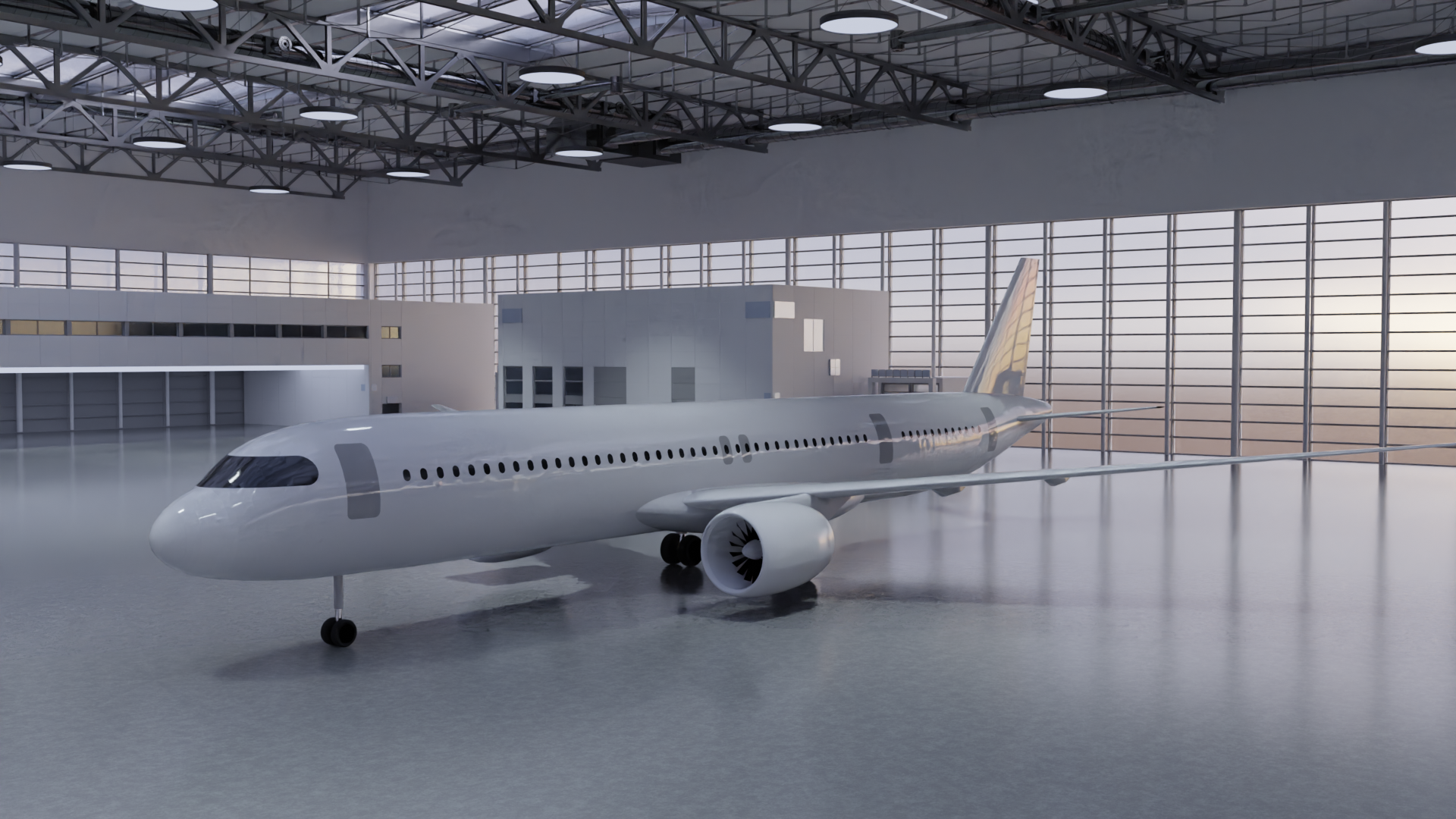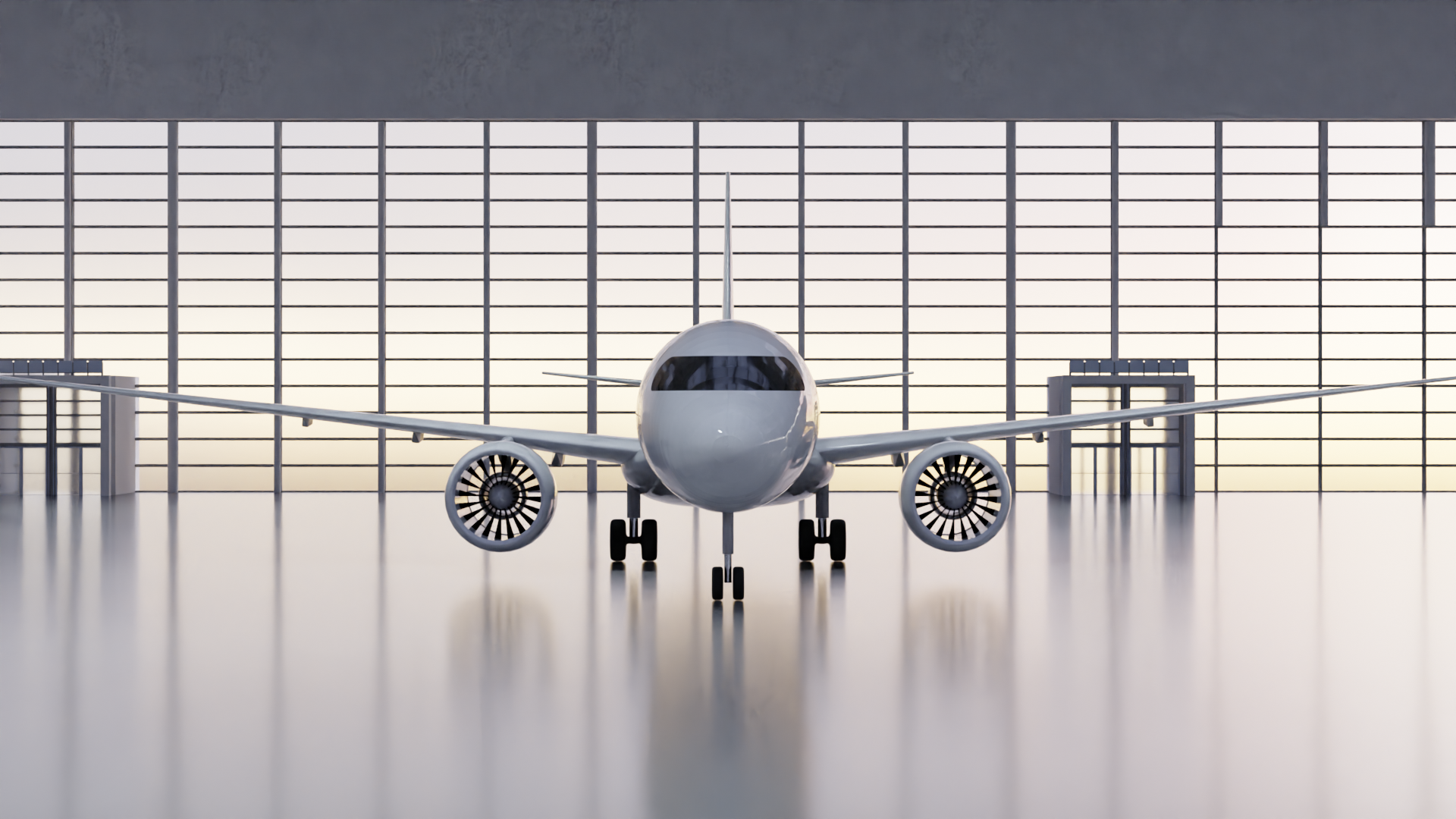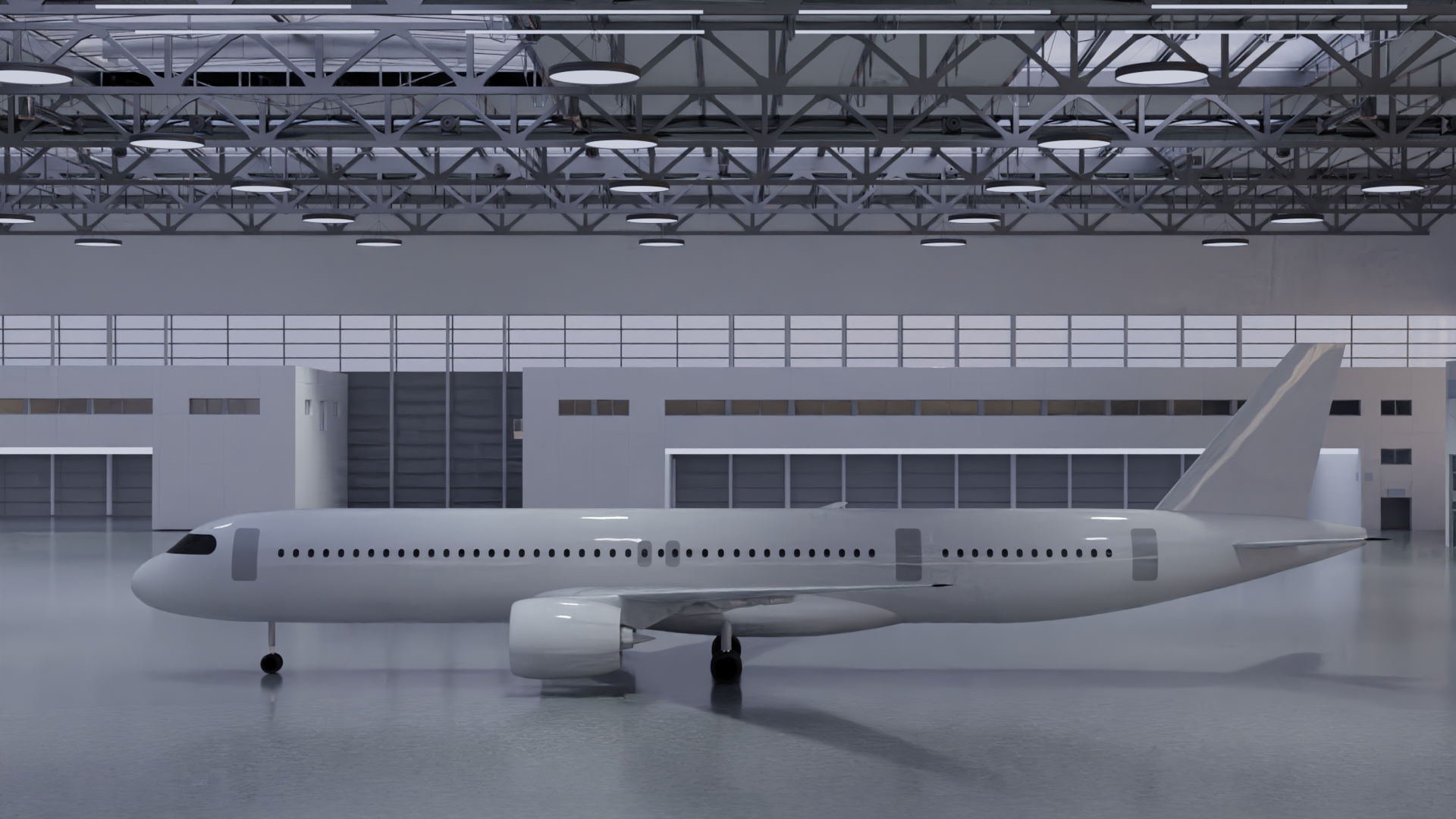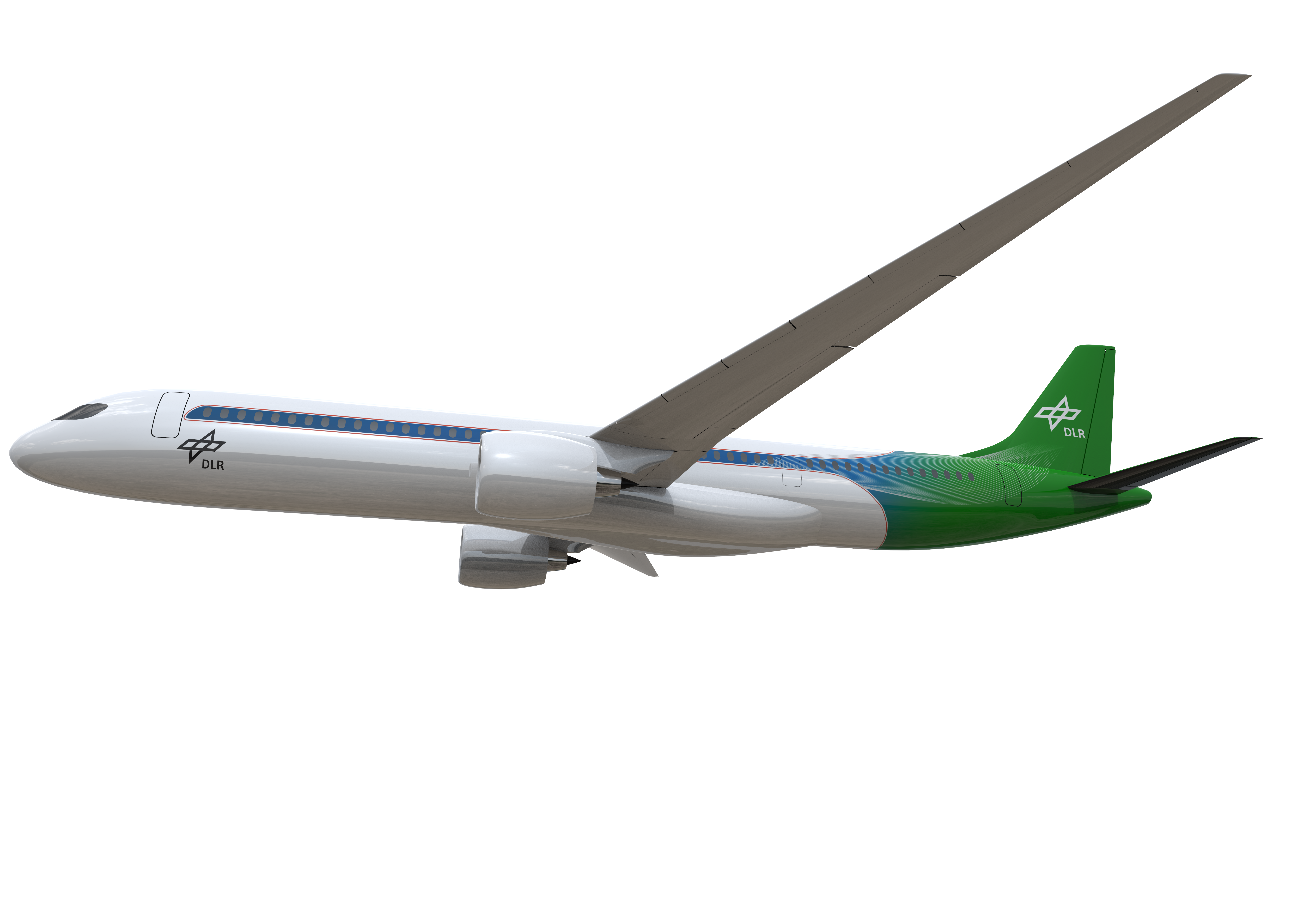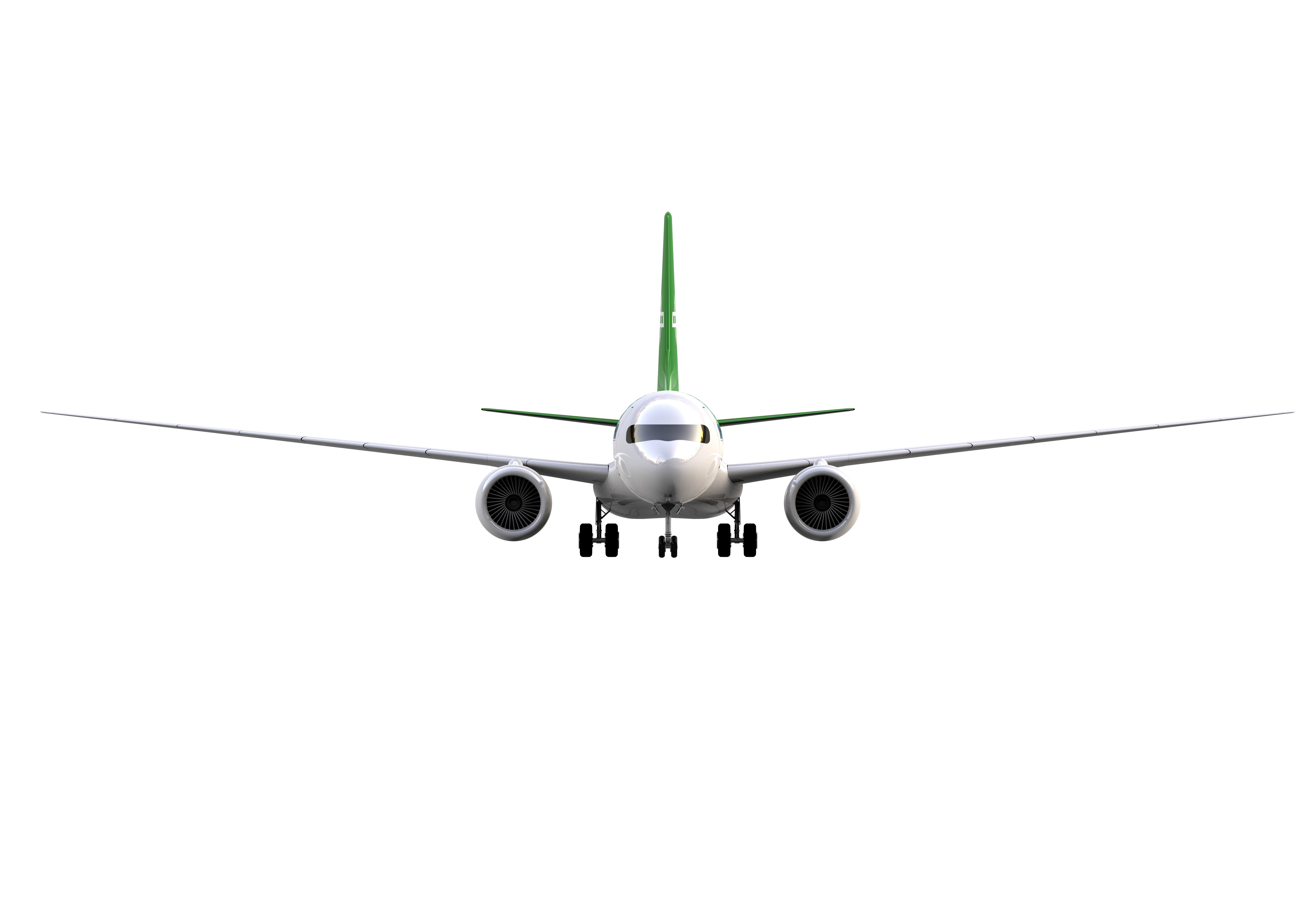The DLR-F25 configuration is intended to be the starting point for various research projects within Clean Aviation, the German funded research programme LuFo and DLR internal projects.
It originates from the LuFo project VirEnfREI studying very high aspect ratio wing and ultra high bypass ratio engines.
In the scope of the research projects ACAP, UPWing, Airtime among others, the structural and aerodynamic wing design as well as advanced on-board system and advanced load allevation system and engine design are studied in detail.
To establish the DLR-F25 as a common research baseline, a consistent definition of requirements, design process, design rationale and aircraft characteristics are introduced and documented.
The most important differences to today’s short-haul aircraft are:
- Foldable wingtips to increase the aerodynamic efficiency and still fit into the 36m gate limit.
- Carbon fiber reinforced polymer (CFRP) wing structure to reduce wing mass featuring advanced load allevation.
- Advanced on-board system architecture.
- Ultra-high bypass ratio (~15) turbofan engine.
Advantages
-
⬆️ Challenging wing design with the potential to highly improve efficiency
-
⬆️ Further improvement potential through hybrid propulsion technologies or open fan architecture
-
⬆️ Direct replacement for current single aisle fleet due to consistent TLARs
-
⬆️ Smooth transition to sustainable aviation fuel through flexible blending of fossil kerosene and synthetic kerosene
Challenges
-
➡️ Less climate impact reduction potential than alternative energy carrier options
-
➡️ Efficiency of wing technology yet uncertain
Project & Partners
The DLR-F25 originates from the
VirEnfREI project of the German Federal Aerospace Research Programme LuFo. It is subject to further research and more detailed technological development in the scope of various research projects at national and EU-level in collaboration with partners from industry, academia and research organisations. Highlight projects are the EU Clean Aviation projects
ACAP and
UPWing, and the LuFo project
AirTiMe.
Outlook
Further research will cover the maturation and validation of the aircraft design and in particular the wing design. Therefore, a wind tunnel test is scheduled for June 2025 within the VirEnfREI project.
Key Characteristics
| Name |
Unit |
Value |
| Design Range |
NM (km) |
2500 (4630) |
| Design Passenger Capacity |
- |
239 |
| Design Cruise Mach Number |
- |
0.78 |
| Entry into Service Year |
- |
2035 |
| Take-off-Field-Length |
m |
2200 |
| Approach Speed |
kts (CAS) |
136 |
| Propulsion Architecture |
|
Turbofan |
| Energy Carrier |
|
Fossil or Synthetic Kerosene |
| Max. Take-Off Mass (MTOM) |
t |
85.7 |
| Operating Empty Mass (OEM) |
t |
46.3 |
| Max. Landing Mass |
t |
74.2 |
| Maximum Fuel Mass |
t |
16.7 |
| Max. Payload |
t |
25 |
| Wing Span (unfolded) |
m |
45.0 |
| Wing Span (folded) |
m |
36.0 |
| Distance to alternate Airport |
NM |
200 |
| Loiter Time |
min |
30 |
| Contingency |
- |
3% |
| Max Operating Altitude |
ft |
41000 |
| Min. Climb Rate |
ft/min |
300 |
| Passenger Seats Abreast |
- |
6 |
| Block-Energy (@ Design Mission) |
GJ |
521.7 |
| Block-Energy (@ Evaluation Mission, 800NM) |
GJ |
178.1 |
| Block-Energy per Pax and NM (@ Design Mission, high density) |
MJ/PAX/NM |
0.873 |
| Block-Energy per Pax and NM (@ Evaluation Mission, high density) |
MJ/PAX/NM |
0.931 |
Mass Breakdown
Payload-Range Diagram
References
Establishing the DLR-F25 as a Research Baseline Aircraft For the Short-Medium Range Market in 2035.
S. Wöhler, J. Häßy, V. Kriewall
34th Congress of the International Council of the Aeronautical Sciences, Florence, Italy, 2024.
Recommended citation
Phased high-fidelity aerodynamic design from scratch of a very high-aspect ratio narrow-body airliner.
C. Ilic, P. Wegener, J. R. Bailo, J. Himisch, S. Geisbauer, F. Lange-Schmuckall, and S. Wöhler
AIAA AVIATION FORUM AND ASCEND 2024, Las Vegas, USA, 2024.
Structural aspects of the high aspect ratio wing: DLR-F25.
S. Dähne, T. KLimmek, A. Schuster, M. Schulze, C. Hühne
EASN 2023.

